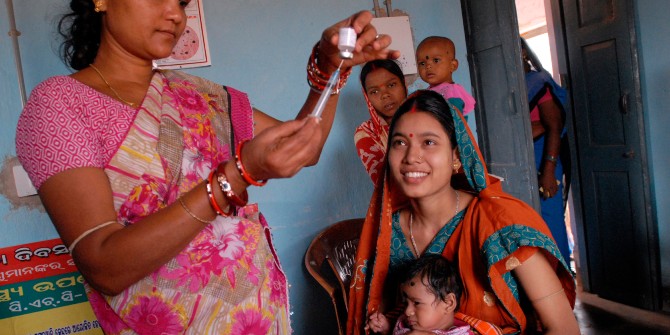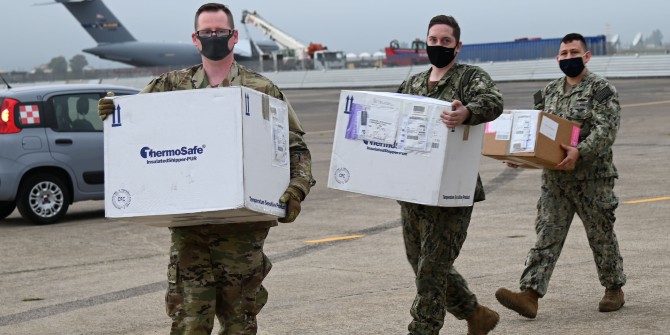As vaccine uptake falls in the US and UK, COVID testing will still be necessary, says Dawid Nidzworski. The emerging class of molecular genetic tests will enable people to test themselves quickly, accurately and cheaply.
Increasingly, governments – including the US, UK and Singapore – are aiming to ‘live with COVID’. The right type, speed and frequency of testing – not just vaccines or lockdowns – that will allow us to do that. Lockdowns and restrictions are not sustainable economically. It is also clear that vaccine demand is levelling off in younger groups, and that vaccines are somewhat less effective against variants.
Vaccines haven’t created herd immunity anywhere, even in the most vaccinated countries in the world. Whilst both Moderna and Pfizer vaccines have reported 95% efficacy in clinical trials, their real world effectiveness is lower, particularly because variants are emerging faster than new vaccines. Novavax, originally touted as having 90% efficacy, only has a 60% efficacy rate against the South African variant. In Israel, Pfizer’s efficacy against symptomatic infection has dropped from almost 100% to 64% after the Delta variant emerged.
Even before accounting for variants, the AstraZeneca vaccine only reported 70% efficacy, and the Johnson and Johnson jab 66%. Herd immunity is therefore some way off.
And not everyone is willing to be vaccinated. As of 21 July, less than half the US population have received two doses. In addition to the vaccine hesitant and the outright anti-vaxxers, some are ineligible for vaccines due to pre-existing health conditions. Masks only work if they are used properly and constantly – removing them for half an hour to eat a meal is probably close to not wearing them at all.
Hard lockdowns are the other option – and they are simply unsustainable. COVID restrictions have cost the UK economy approximately £251 billion, and have exacerbated existing regional and societal divides. In the US, the nation’s GDP fell at a rate of 32.9% due to lockdowns, the sharpest decline since records began back in 1947.
The holes in our vaccine and social distancing strategies can be filled with tests, but they have to be the right type of test. Currently, tests are either fast and inaccurate (and hence pointless or counterproductive) or slow and accurate (which leaves you to potentially spread the virus for a day or two while you wait for the results).

In the UK, for example, the rapid ‘lateral flow’ tests provided via the Pharmacy Collect service are only 57.7% accurate, which clearly isn’t high enough. This has not been lost on the FDA, who have delivered a scathing review of the same Innova rapid flow tests, citing “significant concerns that the performance of the test has not been adequately established, presenting a risk to health.”
Typical laboratory-based RT-PCR tests are far more accurate but can take anywhere from one to three days to deliver results. They also require the use of specific chemical supplies and PPE, laboratories and expensive instruments. This is not a day-to-day option and is only feasible before travel or mass events. For those who need quick and reliable assurance that they are COVID negative (for example before visiting elderly relatives or going to a crowded restaurant), neither of these tests will do. What we need is a test that is both fast and reliable, and that can slot into people’s daily lives – like brushing your teeth.
Fortunately, such tests are being developed. A new generation of molecular genetic COVID tests are coming on to the market, based on accurate nucleic acid detection. Unlike traditional PCR tests which use isotope markers to detect targeted genetic materials (ie. the virus), the new generation of tests utilise nuclear-derived methods for detecting the presence of specific genetic material in any pathogen (including a virus). They can be used at ‘diagnostic spots’ with an efficacy rate that is comparable to PCR tests and provide results as quickly as lateral flow tests. While the cost of PCR tests is prohibitively high for very regular use, new generation tests will be much closer to the price point of lateral flow tests. As we saw with vaccines, if manufacturers are confident of demand, they can roll out new tests relatively quickly.
These tests should be free for the public, because the economic cost of people self-isolating – either out of fear or necessity – is far greater than the price of the test. France is about to start charging for tests in an effort to encourage vaccine uptake, but this is misguided: both tests and vaccines are part of the solution. Tests can protect against breakthrough infections and new variants, whilst vaccines can protect against most infections and known variants.
Like brushing your teeth, COVID testing should become part of our daily routine, with self-testing kiosks at bus stops and on high streets. Governments and health authorities who want us to ‘live with COVID’ – as I believe we should – must provide the testing that can help us regain our daily lives.
This post represents the views of the author and not those of the COVID-19 blog, nor LSE.





